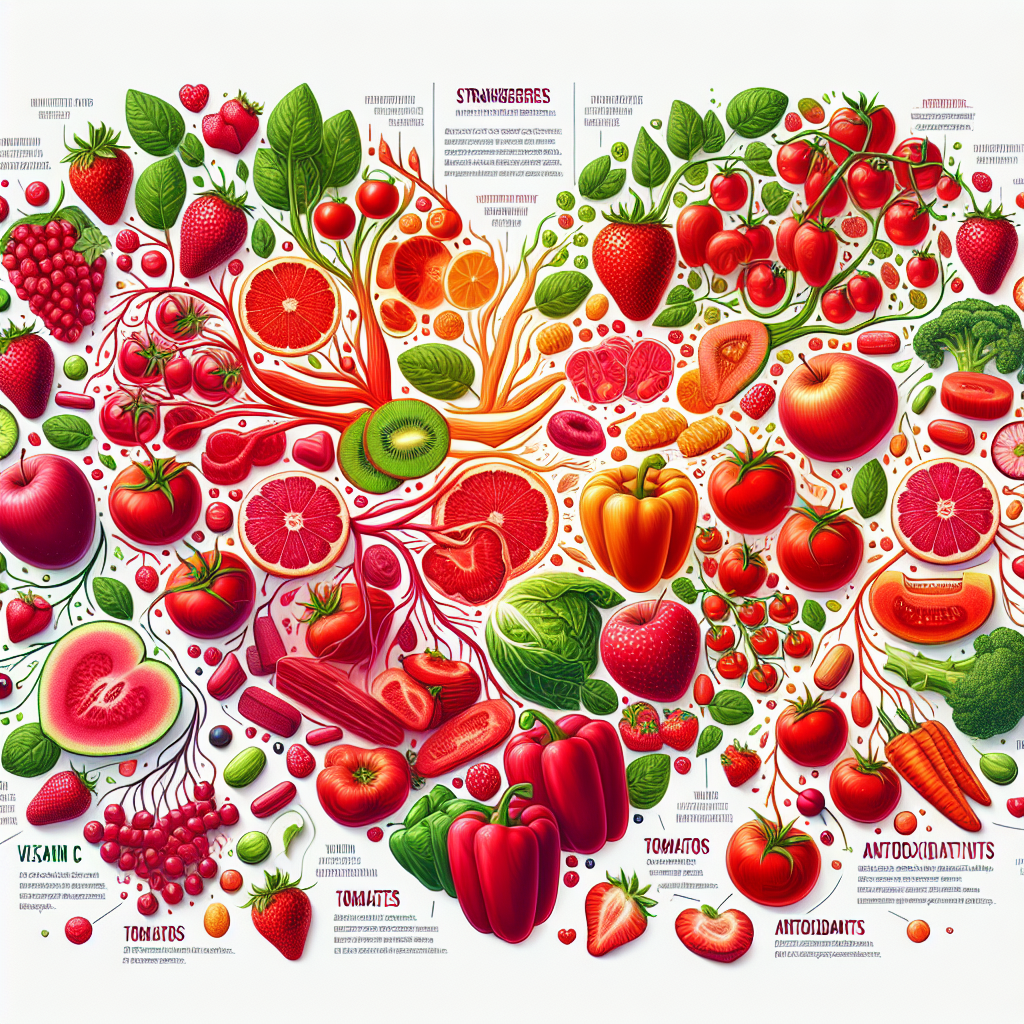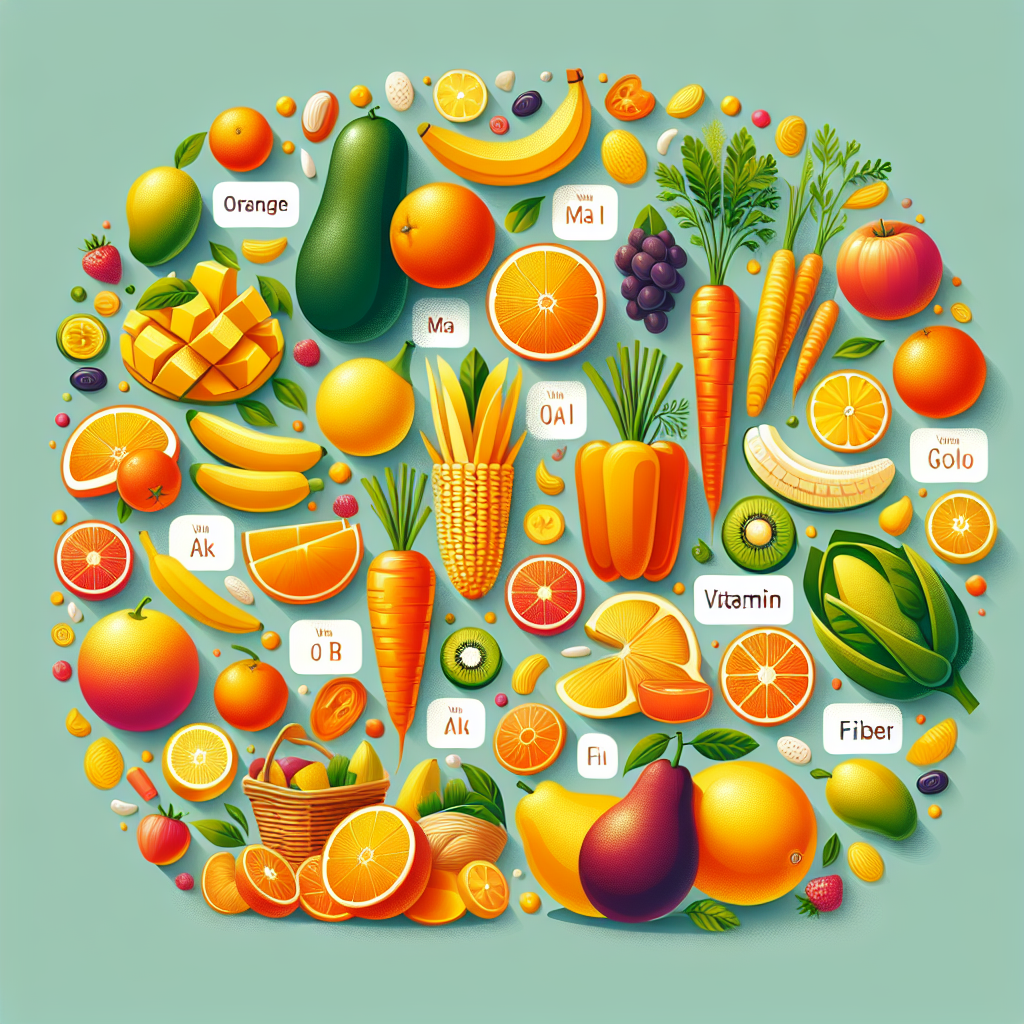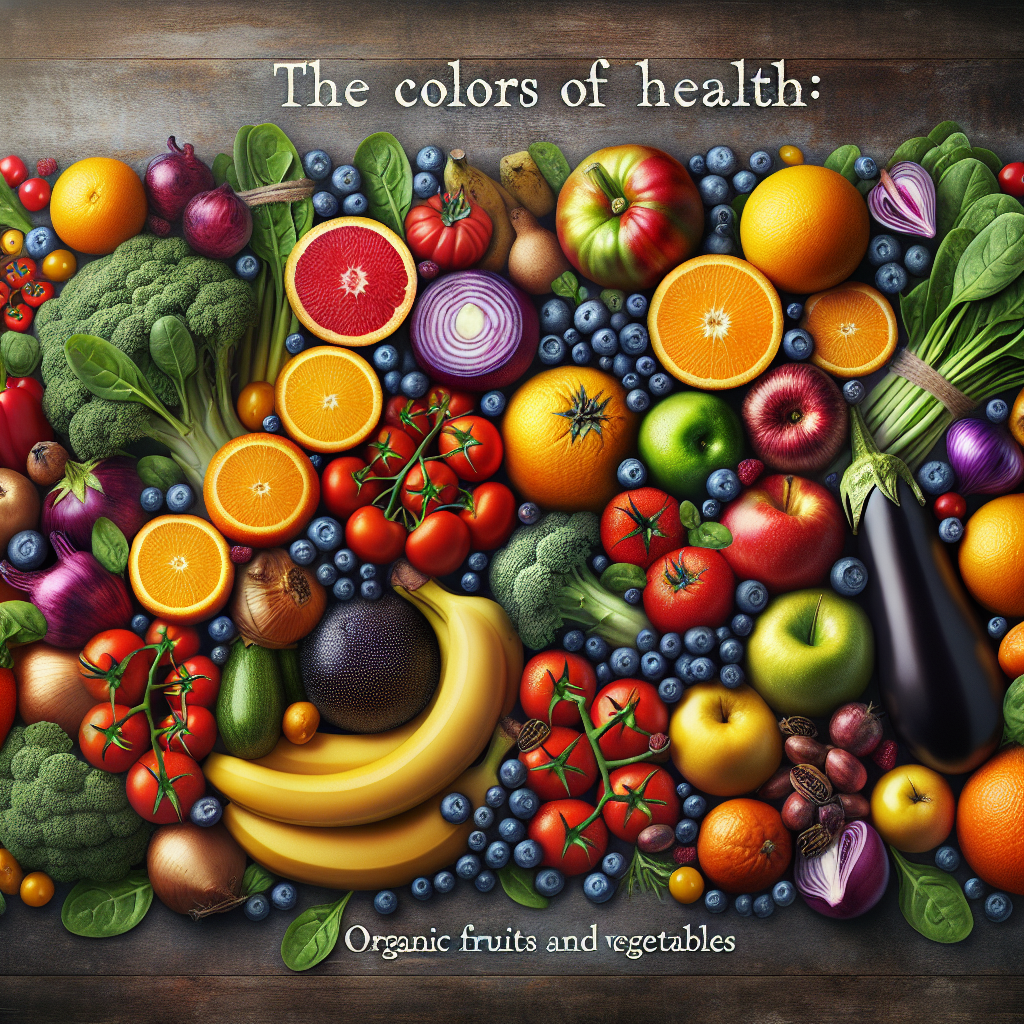The Colors of Health: Organic Fruits and Vegetables

In the world of nutrition, color is more than just an aesthetic feature. The vibrant hues of organic fruits and vegetables are not only visually appealing but also indicative of the unique nutritional benefits they offer. From the deep purples of blueberries to the bright oranges of carrots, each color represents a different set of phytonutrients and antioxidants that contribute to overall health. This post explores the nutritional benefits tied to the vibrant colors of organic fruits and vegetables and provides tips on how to incorporate a rainbow of these nutrient-dense foods into your daily diet.
Why Color Matters in Your Diet

The colors of fruits and vegetables are primarily due to the presence of natural pigments such as chlorophyll (green), carotenoids (yellow, orange, and red), anthocyanins (blue, purple, and red), and betalains (beets and some other red and yellow vegetables). These pigments are not just for show; they come packed with a variety of health-promoting compounds. Consuming a diverse array of colored organic produce can help ensure that you’re getting a broad spectrum of nutrients that support various body functions.
The Nutritional Power of Red Fruits and Vegetables

Red fruits and vegetables such as tomatoes, red bell peppers, strawberries, raspberries, and watermelon are rich in lycopene and anthocyanins. Lycopene, a potent antioxidant found predominantly in tomatoes, has been shown to reduce the risk of certain types of cancer, particularly prostate cancer. It also supports heart health by lowering LDL cholesterol levels and blood pressure.
Anthocyanins, which give red fruits like strawberries and raspberries their color, have anti-inflammatory properties and may help protect against heart disease, diabetes, and certain cancers. Red fruits and vegetables are also typically high in vitamin C, which is essential for immune function and skin health.
The Benefits of Orange and Yellow Fruits and Vegetables

Orange and yellow fruits and vegetables like carrots, sweet potatoes, pumpkins, oranges, mangoes, and pineapples are rich in beta-carotene, a type of carotenoid that the body converts into vitamin A. Vitamin A is crucial for maintaining healthy vision, immune function, and skin health. Beta-carotene itself acts as an antioxidant, helping to protect cells from damage.
Citrus fruits such as oranges are also high in vitamin C and flavonoids, which have been linked to a lower risk of cardiovascular disease. The fiber content in these fruits and vegetables supports digestive health and helps regulate blood sugar levels.
Green Fruits and Vegetables: The Color of Vitality
Green fruits and vegetables, including spinach, kale, broccoli, green beans, kiwi, and green apples, are often rich in chlorophyll, which has been shown to have detoxifying properties. They also contain a wide array of vitamins and minerals such as folate, vitamin K, and iron. Leafy greens like spinach and kale are particularly high in lutein and zeaxanthin, two antioxidants that promote eye health and may reduce the risk of age-related macular degeneration.
Additionally, cruciferous vegetables such as broccoli and Brussels sprouts contain sulforaphane, a compound that has been shown to have anti-cancer properties. The high fiber content in green vegetables supports digestive health and helps maintain a healthy weight.
The Power of Blue and Purple Fruits and Vegetables
Blue and purple fruits and vegetables, such as blueberries, blackberries, plums, eggplants, and purple cabbage, owe their color to anthocyanins. These powerful antioxidants have been shown to improve cognitive function and memory, making them particularly beneficial for brain health. Anthocyanins also support heart health by reducing blood pressure and improving blood vessel function.
In addition to anthocyanins, many blue and purple fruits and vegetables are high in fiber, vitamin C, and other antioxidants that help protect against cell damage and inflammation. Consuming these foods can also help reduce the risk of certain cancers, particularly colon cancer.
White and Brown Fruits and Vegetables
Though often overlooked, white and brown fruits and vegetables like garlic, onions, mushrooms, cauliflower, and potatoes also offer significant health benefits. Garlic and onions contain allicin, a compound known for its anti-inflammatory and immune-boosting properties. They also support heart health by reducing cholesterol levels and improving blood circulation.
Mushrooms are a good source of B vitamins and selenium, which play a role in immune function and antioxidant defense. Cauliflower provides a high amount of vitamin C and contains compounds that help detoxify the body. Potatoes are rich in potassium, which is crucial for maintaining healthy blood pressure.
How to Incorporate a Rainbow of Organic Fruits and Vegetables into Your Diet
1. Plan Your Meals Around Color
When planning your meals, aim to include fruits and vegetables from each color category. For example, a salad might include red tomatoes, orange carrots, green spinach, purple cabbage, and a white onion. This not only makes your meal visually appealing but also ensures a diverse intake of nutrients.
2. Snack on Colorful Produce
Keep a variety of colorful fruits and vegetables on hand for snacking. Carrot sticks, bell pepper slices, apple slices, and berries make for delicious and nutritious snacks. Pair them with a healthy dip like hummus or Greek yogurt to make them even more satisfying.
3. Smoothies and Juices
Blend a mix of colorful fruits and vegetables into smoothies or juices. A green smoothie might include spinach, green apple, and kiwi, while a purple smoothie could feature blueberries, blackberries, and a bit of beetroot for an extra nutrient boost. Make sure to include some protein and healthy fats like avocado or chia seeds to make your smoothie a balanced meal or snack.
4. Colorful Stir-Fries and Soups
Stir-fries and soups are excellent ways to incorporate a variety of vegetables into one dish. Use a medley of colored vegetables such as red bell peppers, yellow squash, green beans, and mushrooms. This not only makes the dish more appealing but also ensures that you get a wide range of nutrients.
5. Experiment with New Recipes
Try new recipes that make use of colorful produce. For example, a roasted vegetable medley can include a mix of carrots, beets, Brussels sprouts, and purple potatoes. Experimenting with new ingredients and recipes can make it easier to maintain a varied and colorful diet.
Conclusion
Incorporating a rainbow of organic fruits and vegetables into your diet is a delicious and effective way to ensure that you are getting a broad spectrum of nutrients essential for your health. Each color group offers unique benefits, so aim to include a variety of colors in your meals and snacks. By making a conscious effort to “eat the rainbow,” you can enjoy a more balanced and nutrient-rich diet that supports overall well-being.
Remember, the key to a healthy diet is variety and balance. So, make it a goal to fill your plate with as many colors as possible and enjoy the many health benefits that come with it.
